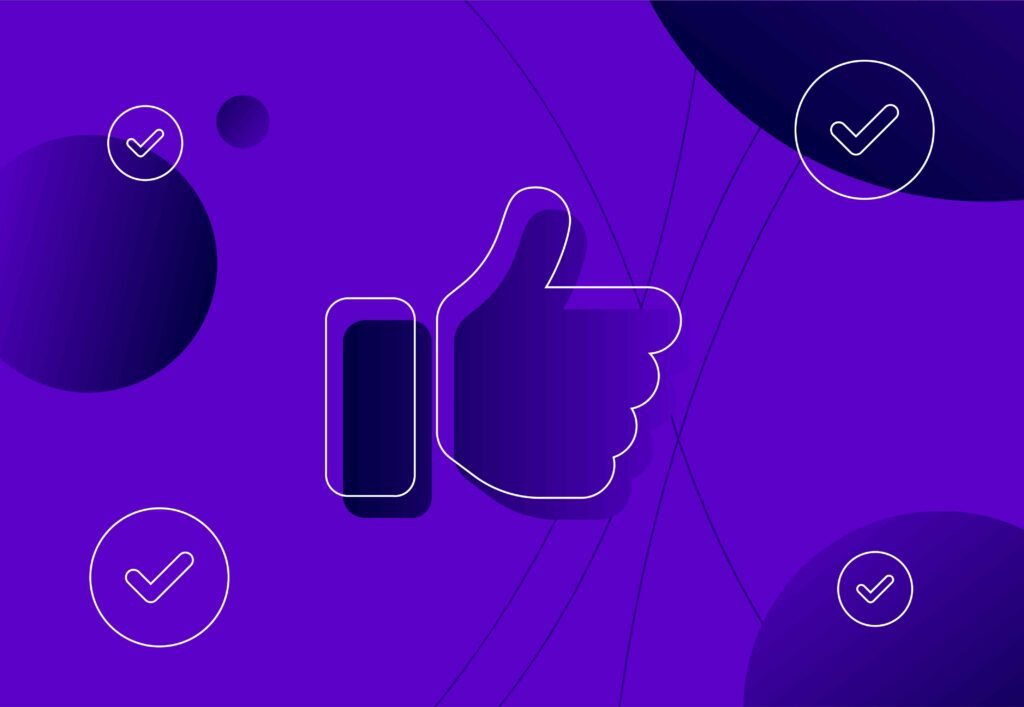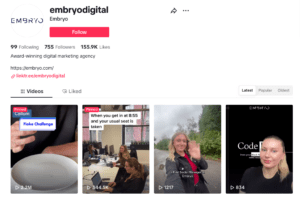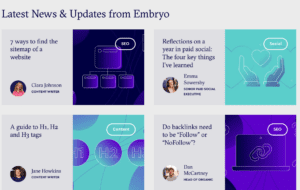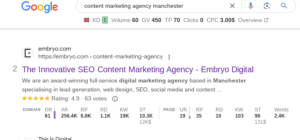
13 lead generation techniques to boost your sales

To be a successful business, you need to have a successful lead generation strategy. And, as lead generation is all about identifying your ideal customer profile (ICP) – it should be the foundation of your sales and marketing plan.
To ensure you’re getting the most out of your lead generation strategy, you and your SEO team need to use (and test out) a variety of tools and techniques – so you can work out what the best one is for your brand and its audience.
Struggling to know where to start? Don’t panic, as in this blog, we’ll discuss 13 different lead-generation techniques to help you boost sales. Read on to find out the best lead-generation tools to use, and how to measure the success of your strategy…
13 lead generation techniques you’ll want to know about
1. Prospect planning
In any lead generation strategy, prospect planning is an important tool to utilise to ensure you’re targeting individuals who match your ICP. If you’ve already defined your target customer, you need to research individuals that match this profile and could potentially be a customer of your business.
Some prospects might be aware of your company, whilst others might not have heard of your business, its services, or its products before. Either way, sales teams will utilise techniques such as cold calling or emailing to gauge an idea of their interest and whether the lead could convert.
2. Cold emailing
As mentioned, cold emailing is an effective strategy when it comes to reaching out to potential customers without having developed a relationship previously. And, it might hurt to know this – but a lot of your cold emails will never be opened. In fact, Campaign Monitor reported that only 21% of cold emails are opened across all global industries. This is obviously what no business wants to hear, but it can be helpful in managing your expectations.
And, there are ways you can increase the engagement of your cold emails. For example, you should avoid fluff and get straight to the point – so the prospect knows what you’re advertising straightaway. And, spend time working on your subject line – this is the first thing prospects will see so it must be engaging.
3. Cold calling
It’s one of the least favourable methods in sales, but it’s one of the most consistently effective. Calling someone you’ve never spoken to before can seem daunting, but it doesn’t need to be. You just need to make sure you’ve prepared properly.
For example, ensure you have researched your prospect properly. Understand what challenges they have, and outline ways your product or service can solve them. Keep your pitch concise – and ensure you know exactly what you’re talking about.
4. Social media marketing
Social media marketing is another technique you can utilise in your lead generation strategies. Building a social media presence is useful when it comes to representing your brand and finding your audience, but it can also help when it comes to generating qualified leads.
Bolster your EEAT and position yourself as a leader on your social media to create and uphold trust and relationships with your audience. Create informative content that answers your customers’ questions and solves their pain points. Ensure you interact with customers as well – ask for feedback, and testimonials, and reply to their comments.

5. PPC
PPC is a highly effective channel for lead generation. Mostly because, you can set aside a budget for PPC that allows you to appear on page one instantly, in front of your target audience.
This is an effective form of lead generation as it can result in quick results by casting the net out wide in front of a large audience – so you could increase your general brand awareness. You can even do test campaigns to figure out what people are searching for, so you know you’re targeting the right prospects.
6. B2B influencer marketing
You can also use B2B influencer marketing to help as part of your lead generation strategy. Influencers can help get your product or service in front of the right people. And, because their followers trust their opinion, it can increase your brand recognition and reputation amongst their demographic.
When working on your influencer marketing, align yourself with influencers that sit within your industry. For example, if you are a budget makeup brand, look for influencers who are high purchasers and reviewers of these types of products. Ensure they have a good reach and engagement level – and take a look at their past collaborations to see what content they have produced for brands before.
7. Content marketing
Never underestimate the importance of content marketing. Offering valuable expertise in the form of blogs, guides, and whitepapers can boost your authority as an industry leader; encouraging your audience to trust in what you have to say, as well as your products and services.
But, you shouldn’t assume any old content will be good enough. It needs to be informative – and without AI. Whilst automation can help speed up many processes, AI won’t provide original, intuitive content like a content writer would. Which, is ultimately the content Google likes and will promote.

8. Collaborate with another business
You could also collaborate with another business as part of your lead generation strategy. Avoid working with a competitor, as this will likely mean you have to share the leads you generate. Instead, try to work alongside a business that complements your products and services.
For example, if you own a skincare business, you could organise a giveaway to your followers with a brand that specialises in skincare tools. This way you are promoting both products without pitting the brands against each other.
9. Landing pages
Another lead generation technique that you could implement in your company is landing pages. Used in PPC campaigns, landing pages are a page on your website that captures information from your prospective customers – making them a lead. A landing page will have a call to action – allowing the customer to download a free guide, or template, or book a free advice call.
From this, it will take their contact details so your sales team can get in touch with them. Not only does this make them aware of your business and its offering, but it also allows your sales team the opportunity to continue the conversation with them – by highlighting their pain points, and showcasing how your product/service can solve them.
10. Chatbots
Chatbots help your business generate qualified leads, which is why they’re such a valuable tool when it comes to lead generation. They work by featuring on your website 24/7 – allowing visitors to talk to the chatbot to find out ways your business might be able to help them.
The chatbot will have a series of questions it will ask the visitor to find out this information. If, after analysing the data, it believes the visitor is a qualified lead, it will pass the information on to a sales representative – so they can get in contact with them to sell your products/services.
11. SEO
Leveraging SEO should be an important part of your lead generation strategy. Not only can you utilise it to rank for keywords your customers might be using, but you can also use it to improve user experience on your website. After all, happy website visitors will stick around and come back for more.
To do so, ensure your website has no 404s, all your pages have been indexed on Google – and your page speeds are fast. Remember, in this day and age, most people have a shorter attention span – so the quicker your website is to use and interpret, the more likely a prospect will want to keep using it.

12. Webinars and networking events
Webinars and networking events are another great way to generate leads. When you encourage people to sign up to your webinars, they can provide their contact details – which your sales team can use to continue the conversation with them.
Webinars also allow you to position yourself as an expert in your industry, so prospects will put more trust in your business. As a result, they’re more likely to visit your website and show an interest in your products/services.
13. Referrals
It might seem simplistic, but referrals can be a great way to generate leads. If you’re an e-commerce business, encourage customers to refer you with a discount code they can receive when they encourage others to sign up to your website.
If you work in B2B, after working with a client, ask them to refer you to other business owners they know. When it comes to trusting a brand, it’s much easier to do so if a valued friend or colleague has worked with/bought from them before – and highly recommend them.
Want to learn more? Keep reading our resources
- Nurture Leads Like a Pro With These 15 Best Practices
- 29 Sales Stats to Help Your 2024 Strategy
- 5 SEO And Digital Marketing Tasks That Need Automation
Asking the Embryo experts: What are your lead generation top tips?

Charlotte Fallon, Marketing Director at Embryo believes that brands looking to improve their lead generation should ensure they’ve got their CRM system linked up with their Meta and Google Ads accounts:
“This way, you can ensure that your paid marketing is driving quality leads, without just looking at the lead numbers that the platforms are giving you.
“In lead gen, you should always look at the cost per converted or accepted lead data, rather than just lead volume. That way, you can test, assess, and push more budget to the activities, ads, creative, and landing pages that are driving the leads your sales team can actually convert.”

Louise McGuigan, Business Development Consultant at Embryo advises brands to spend a lot of their strategy time doing the necessary research:
“High quality, personalised prospecting of your ideal customer is a big part of lead generation. Taking the time to identify good-fit businesses and researching their industry – before taking a multichannel approach to get in front of them – can make your company stand out.
“A human approach to prospecting, through cold calling and video outreach, also goes down well when setting a welcoming tone for the start of any business relationship.”
Lead generation techniques: FAQs
What is lead generation?
The process of generating leads simply means organising a strategy that targets, recognises, and reaches out to people who meet a company’s ICP – so the brand can attract more customers and ultimately, sales.
Sales and marketing teams will work alongside each other to identify a customer’s full journey – and align their strategies to suit. For example, those writing content for the website might add more CTAs to encourage the customer to contact the sales team, and eventually, purchase the product or service.
A lead is described as any individual who shows a tangible interest in a company’s products or services. For example, they might do this by clicking on the business’s website, or signing up for a newsletter.
What is the difference between inbound and outbound lead generation?
The difference between inbound and outbound lead generation is that when you generate inbound leads, these are typically individuals you have identified who have already shown an interest in your business and its products or services.
Whereas, outbound lead generation involves a more aggressive sales effort with individuals who fit your ICP, but haven’t necessarily heard of your business or interacted with it. Sales teams will opt for methods such as email marketing and cold calling when attracting outbound leads.
What are some top lead generation tools?
There are several lead generation tools available for you to use. But, the ones that stand out to Embryo’s own sales team the most include:
- Unbounce: This platform allows businesses to test their landing pages – so they can see what works and what doesn’t. It provides metrics such as conversion rates and visitor behaviour, so is a good indicator of what pages are effective at attracting customers.
- Salesforce: Salesforce is a popular tool many use to help them when it comes to converting visitors to customers. It helps measure the performance of a campaign against its predetermined goals. For example, it can advise the total number of leads generated in a campaign.
- Cognism: This tool helps businesses identify contact details of those that they want to attract or companies they want to form a relationship with. This includes LinkedIn profiles, mobile numbers, and email addresses.
- Lead Forensic: Lead Forensic lets businesses know what companies have visited their website and which pages they have visited. Ultimately, it helps companies know what is working on their website and what isn’t.
- LinkedIn Sales Navigator: This platform allows businesses to build lists of potential customers for targeted outreach strategies. It also helps companies know when someone has moved jobs or companies, so is ideal for those working on their B2B marketing.
How do you measure the success of lead generation?
To measure the success of your lead generation strategy, you need to set yourself several KPIs. These can be anything, as long as they showcase tangible evidence that your lead generation strategy is or isn’t working.
For example, you could use the following metrics:
- Cost per lead (CPL): CPL helps businesses confirm if the leads they are generating are cost-efficient. In order for the lead to be worth generating, they need to spend a certain amount of money when visiting your website.
- Lead-to-customer conversion rate: This metric measures the percentage of leads that convert into paying customers. When businesses use it as a KPI in their lead generation strategy, they can understand how effective it is at attracting customers.
- Bounce rate: Bounce rate can indicate user satisfaction when it comes to your website structure and its content. If your bounce rate lowers after implementing a lead generation strategy, it means that customers are staying and exploring your website to see what you have to offer.
- Website traffic: A useful KPI for a variety of different marketing strategies, website traffic will indicate whether your strategy has led to an increase in visitors to your site.
- Customer Lifetime Value (CLV): This KPI measures the amount of revenue a company can expect to earn from a customer over their relationship period. It can help businesses make decisions about strategies involving the value of the customers they’re targeting.
- Click-through Rate (CTR): CTR is a metric that indicates the average number of clicks an ad receives by the number it’s displayed. It’s great for showing engagement, and dictating which ads are effective.
Want your marketing to be led in a new direction?
At Embryo, we put your business at the heart of any marketing campaign and have extensive experience increasing leads for businesses. To learn more, reach out to our team today.


